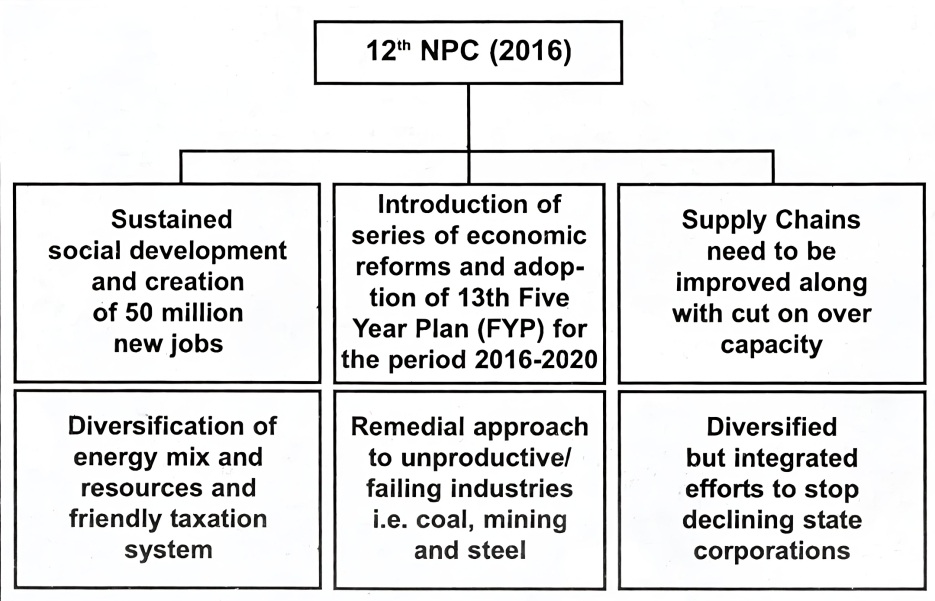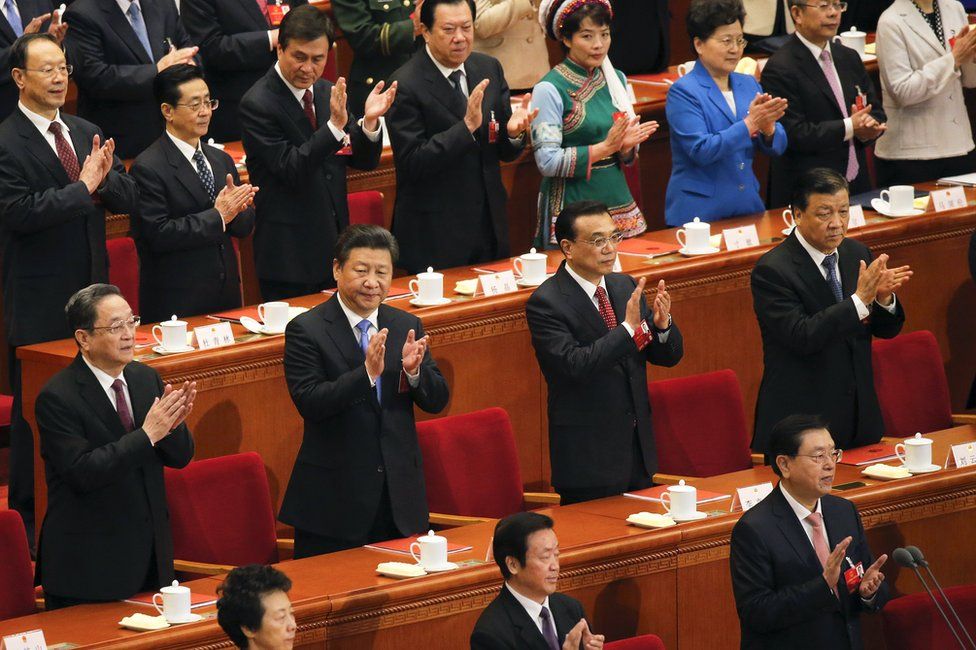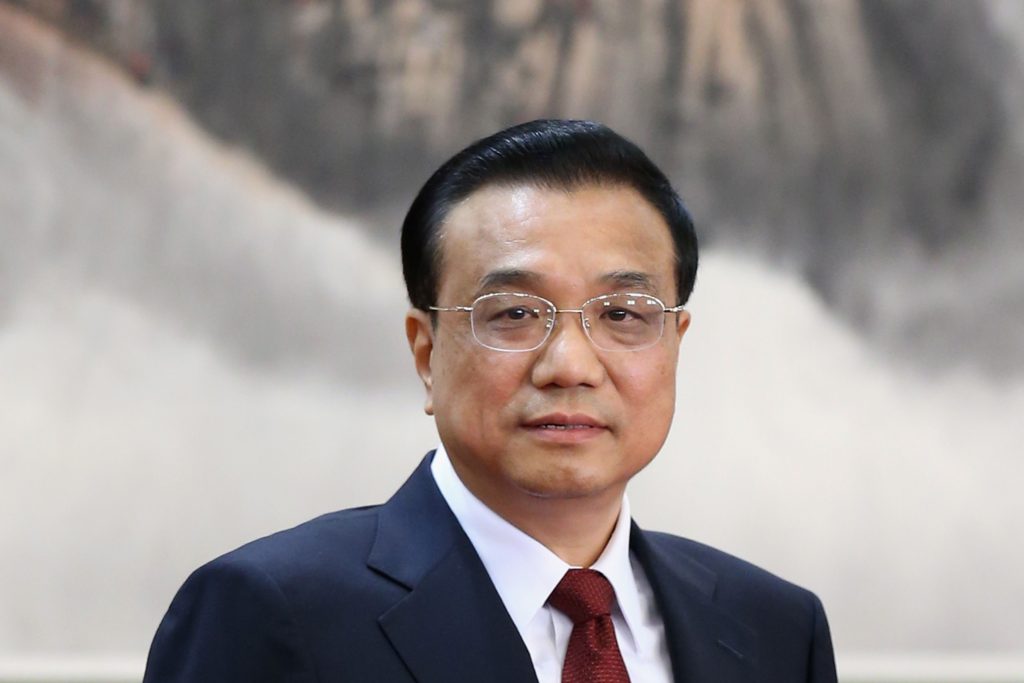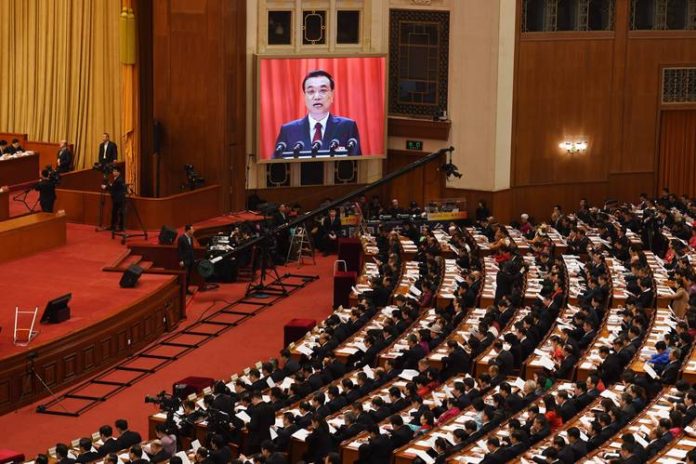Most recently, the Chinese government prioritized its national policies of economy, politics, investment, industrialization and taxes in the 12th National People’s Congress. It highlighted achievements in its economic sphere during 2015. Chinese Prime Minister Li Keqiang gave his annual state-of-the-nation report to the legislature, the National People’s Congress. The congress also approved a new five-year plan during the meeting.
The new report has supply orientation which needs to be implemented for the further consolidation of its macro-economy and achieving greater socio-economic stability and sustainability in the days to come. It consists of a series of reforms, policies and programs in different diversified but integrated sectors of macro-economy, production and human survival.
The Chinese Government has shifted from a capital-intensive growth model to a supply intensive growth model for the next years. It rightly decelerated its economic growth and introduced many short and long term socio-economic reforms. It also initiated many meaningful financial and banking reforms to stimulate its macro-economy and speed-up process of industrialization.
It has rationalized its national economic priorities and has introduced more regional as well as national policies and programs in order to boost its service sector. It focuses on green energy. Remedial approach to re-activate failing industries and weakening State Corporations would pay its divides in the days to come. Strategic alliances through rigorous commercial diplomacy would bring desired goals of greater socio-economic prosperity and connectivity.
Macro-Economy’s Predictions
1. Macro-Economy
Chinese Prime Minister Li said China’s economy would grow by 6.5 percent to 7 percent during 2016 and mentioned various domestic problems and risks which created downward pressure on the economy. He said it would be possible for China to achieve an average annual growth rate of 6.5 percent from 2016 to 2020. Moreover, China would target consumer inflation at around 3 percent and unemployment “within 4.5 percent.
China is feeling sluggish demand at home and abroad, industrial overcapacity and faltering investment, China’s economic growth slowed to 6.9 percent in 2015. It is a wise move.
Nevertheless, according to Chinese National figures (March 2016) GDP reached 67.7 trillion yuan, representing an increase of 6.9% over the previous year – a growth rate faster than that of most other major economies. Food crop production increased for the 12th year in a row. Consumer prices grew slowly. Employment situation overall remained stable, with 13.12 million new urban jobs created over the course of the year, surpassing the year’s target and becoming an economic highlight during 2015.

Chinese Sectoral Growth (2015)
| Different Sectors | Percentage of GDP |
| Services | 50.5 |
| Consumption | 66.4 (Energy consumption per unit of GDP fell by 5.6 percent ) |
| High-tech industries and equipment manufacturing | Grew faster than other industries |
2. Remedy for Falling Industries
The report showed great concerns about the failing industries and its potentially painful adjustments to industries that will be needed to shore up growth. Gluts of coal, steel, cement and other industrial commodities have been generating heavy pollution but dwindling profits. Mr. Li indicated that China would need to lay off millions of workers in failing factories and mines. But the government will set aside about $15.3 billion to support laid-off workers.
“We will focus on addressing the overcapacity in the steel, coal and other industries facing difficulties,” he said. “We will address the issue of ‘zombie enterprises’ proactively yet prudently by using measures such as mergers, reorganizations, debt restructurings and bankruptcy liquidations, he said”.
3. Declining State Corporations in Trouble
A big reason the government needs to reduce excess production was laid out by the Ministry of Finance. The income of many state-owned corporations is plunging. The ministry forecast that in 2016 the operating income of China’s biggest, centrally managed state conglomerations would fall by more than 13 percent. The main reason, it said, was “the falling profits in the oil and petrochemical, steel, coal and other sectors.”

Innovation Driven Development (2015)
Innovation-driven development was all time high during 2015 and penetration of the Internet into all industries picked up pace. Moreover, emerging industries grew rapidly. Business startups and innovations by the general public flourished, with the number of newly registered businesses rising by 21.6 percent in 2015, or an average of 12,000 new businesses per day.
4. Energy and the Environment
Diversification of energy mix and resources along with protection of environment were discussed during the just concluded 12th NPC. The Chinese government is trying its level best to reduce carbon footnotes, reduce smog, polluted water and contaminated soil.
Li’s report laid out goals to cut pollution from this year to the end of 2020. According to the report, the carbon intensity of the economy, the amount of carbon dioxide pollution released to create each unit of growth would fall 18 percent over those years.
The five-year plan includes proposals to expand monitoring of polluted soil and to set up hundreds of model farming and construction sites to show how toxic earth can be cleaned up.
Improved Living Standards (2015)
According to state-of-the-national report (2016) personal per capita disposable income increased by 7.4 percent in real terms. Personal savings deposits had risen by 8.5 percent. In rural areas, another 64.34 million people gained access to safe drinking water and greater alleviation efforts reduced the number of people living in poverty by 14.42 million.
Main Characteristics of Economic Report 2016
1. GDP growth would be 6.5 percent and 7 percent
2. Consumer Price Index (CPI) around 3 percent
3. M2 growth target around 13 percent
4. budget deficit at 3 percent of GDP
5. Optimal utility of various monetary policy tools to maintain reasonable liquidity
6. Continuation to implement prudent monetary policy
7. Implementation of proactive fiscal policy
8. Keep renminbi exchange rate basically stable in 2016
9. Continue to improve yuan exchange rate regime in 2016
10. Deepen reform of financial sector
11. Further liberalise interest rates
12. Deepen reforms of state owned commercial banks
13. Introduction of reforms in stock and bond markets
14. Promote sound development of multi-level capital market
15. Crack down on unlawful activities in the securities and future markets
16. Ensure no systemic or regional financial risks arise
17. Strengthen unified macro-prudential management of foreign debt
18. Launch Shenzhen-Hong Kong stock connect pilot at appropriate time
19. Establish catastrophe insurance system
20. Develop internet finance
21. Develop inclusive and green finance
22. Insure proportion of direct financing is increased
23. Develop private banks
24. Growth in outstanding social financing of around 13 percent in 2016
25. Launch trial allowing commercial banks to participate in debt equity investment for small businesses
26. Establish standard financing mechanisms for local governments to issue debt
27. Issuance of 400 billion yuan of special local government debt in 2016
28. Keep urban registered jobless rate below 4.5 percent in 2016
29. Creation of 10 million new jobs in 2016
30. Quicken supply-side structural reform
31. Appropriately deal with zombie firms in 2016
32. Address issue of zombie firms using mergers, reorganizations, bankruptcies and debt restructurings
33. Rigorous reforms in state-owned firms
34. Resolution of overcapacity in industry, focus on steel and coal
35. 100 billion yuan in subsidies will be used primarily to resettle laid off employees
36. Convinced Hong Kong, Macao will maintain long-term prosperity and stability
37. Oppose Taiwan independence separatist activities
38. Safeguard peace and stability in Taiwan Strait
The Chinese government is trying to cope with all emerging negative trends in its economy with a strategic superiority. Now, innovation is the primary driving force for development and must occupy a central place in China’s development strategy. It also encourages major breakthroughs in basic research, applied research, and research in strategic and frontier fields by 2020.
China also wants to expand its major infrastructure projects with the aim of increasing the length of high-speed railways in service to 30,000 kilometres and linking more than 80 percent of big cities in China with high-speed railways, building or upgrading around 30,000 kilometres of expressways, and achieving full coverage of access to broadband networks in both urban and rural areas. It would definitely pay its dividends in the days to come.
Next Five Year Priorities
| National Priorities | Percentage % |
| water consumption | 23 |
| energy consumption, | 15 |
| carbon dioxide emissions | 18 |
According to the report China will promote greater use of Chinese equipment, technology, standards, and services in the international market, and help Chinese manufacturing brands gain international recognition.
Strategic Economic Partnership Agreements
| Partnership Agreements | Details |
| China-Japan-ROK free trade zone. | Establishment of free trade zones. |
| China-USA | Negotiations on investment agreements between China and the United States. |
| China-EU | Further strengthening of commercial diplomacy between China and EU. |
Salient Features of National Development & Reform Commission 2016
a. Retail sales of consumer goods expected to grow 11 percent
b. Fixed asset investment expected to rise around 10.5 percent
c. Non-financial outward direct investment to reach $130 billion, up 10 percent
d. Non-financial foreign direct investment in China to reach $128 billion
e. Carbon intensity to be cut 3.9 percent
f. Total energy consumption under control in 2016
g. Lift price controls in power, oil and natural gas
h. Improve the pricing mechanism for refined oil products
i. Increase support to help turn around steel and coal sectors
j. Control expansion of coal production and coal power generation capacity
Selected Macro-Economic Indicators (2016)
| Economic Indicators | Details |
| fiscal deficit | 2.18 trillion yuan |
| national fiscal revenue | up 3 percent |
| national fiscal spending | up 6.7 percent |
Law Based Taxation
China will continue to push forward the implementation of law-based taxation. It is a healthy adjustment because previously constant high growth rates produced inflating asset bubbles, hobbling the financial system and distracting firms from investing in upgrading their competitiveness. It hopes the country’s financial markets can play a stronger role in supporting the transformation.
Stock & Bond Markets
Many meaningful reforms have been introduced in the 12th NPC. China will now move forward with the reform of stock and bond markets and increase the level of rule of law in their development, promote the sound development of the multilevel capital market, and ensure that the proportion of direct financing is increased. Chinese markets faced very difficult times during 2016 and totally erupted with the stock indexes crashing and the yuan sliding sharply against the dollar. Chinese government systematically intervened both onshore and in offshore markets in order to stabilize stock and bond markets.

Concluding Remarks
Chinese Prime Minister Li Keqiang introduced many short as well as long terms economic reforms during the 12th NPC. China has now prioritized rebalancing, restructuring and market-oriented reforms in its next five year plan (2016-2020). It is indeed a blue print of its economic and social progress until 2020.
It adopted four pronged comprehensive strategy which consists of continuation of reforms and opening up; follow the new vision of development; follow the general principle of making progress while working to keep performance stable; adapt to the new normal in economic development and law based taxation. It hopes to have eradicated poverty and doubled its 2010 GDP and per capita income.
Its strategic plan builds on the “five development concepts” of “innovation, coordination, green development, openness and inclusiveness. It is now imperative for China to adopt new technologies and industries and holistic approach towards building up human resources and capital. It aims to move away from traditional growth sectors such as steel, which are set to witness mass layoffs as the country slashes overcapacity.
It provides systematic approach to move forward and replacing old drivers of growth with new ones which will definitely upgrade socio-economic growth, industrialization process and human development with great promise in the days to come.
It covers all aspects of economic development and balanced industrialization. It creates strategic balance between regional inspirations and national priorities. It balances stock as well as bond markets and further strengthens macro-economic stability while brightening its socio-economic sustainability.
It enhances capacity building measures at every level of command, execution and production chain. It regulates supply-side of regional as well as national economies. It introduces China’s urbanisation plans and the government will grant urban residency to about 100 million people and create more than 50 million new urban jobs. By 2020, urban residents should account for 60 per cent of China’s population, up from 56 percent now.
It pledges to protect the environment and increases the proportion of China’s middle-income group. It reduces the income gap. It values people which are inexhaustible source of power. It would reinvigorate the macro-economy and ensure its dynamic growth. It also pledges to promote green growth.
Despite weak global economy and mediocre regional financial systems China maintained stable growth, made structural adjustments, guarded against risks, and developed new ways of conducting macro regulation. It adopted a proactive fiscal policy that focused on increasing intensity and efficacy by expanding the scope of structural tax reductions, reducing fees across the board, and putting dormant budgetary funds to good use.
During 2015, local government bonds issued to replace outstanding debt reached 3.2 trillion yuan which lessened the interest payment burden of local governments by approximately 200 billion yuan while also reduced their debt repayment pressure.
China pursued prudent monetary policy and initiated several cuts to interest rates and required reserve ratios. It reformed management of the loan-to-deposit ratio, created new monetary policy tools, and increased support for the real economy due to which effective investment increased, and special-purpose funds were established.
It intensified reforms to streamline administration. It delegates more powers and improves regulation and provides better services. It delegated the power or cancelled the requirement for government review for 311 items, cancelled the requirement for verification or approval for 123 professional qualifications, and put a complete stop to the practice of non-administrative review. Ultimately it increased domestic as well as foreign investments ratios in the country.
China also introduced fiscal, tax, financial, and other key reforms. The central government cut, by one third, the number of items for which special transfer payments are permitted, while scaling up its general transfer payments. Steady progress was made in replacing business tax with VAT. It produced “feel-good” gesture among the potential businessmen and investors.
In order to achieve price stability and controlling inflationary press, pricing reform was intensified, with the number of central government set prices reduced by 80 percent and the number of local government set prices cut by more than 50 percent. China carried out state-owned enterprise (SOE) reforms, rural reforms, and investment and financing reforms, ecological management reforms, and others which are now paying their dividends.
The Chinese government worked hard to keep foreign trade stable by adjusting the mechanism for sharing the cost of export tax rebates between the central and local governments, overhauling and regulating charges for imports and exports, increasing trade facilitation, and making changes to the export mix. The number of restrictions on overseas investment in China was cut by 50 percent and over 95 percent of overseas-funded projects may now be undertaken on a simple reporting basis. Moreover, China utilized US$126.3 billion of overseas investment, an increase of 5.6 percent.
China also worked to promote industrial innovation and upgrading to improve economic performance. In order to further strengthen the new growth engines, an innovation-driven development plan was adopted along with guidelines on its implementation, policies and measures were introduced to encourage public participation in starting businesses and making innovations, and the Internet Plus action plan was implemented. A great number of makers/brands started businesses and made innovations.
Moreover, improvements were made to policies in support of agriculture to promote transformation of the agricultural growth model during 2015. To rectify the decline in industrial growth and the downward slide in corporate performance, China fostered new industries and upgraded traditional ones. It launched the Made in China 2025 initiative to upgrade manufacturing, set up government funds to encourage investment in emerging industries and to develop small and medium-sized enterprises, and established more national innovation demonstration zones.
The Chinese government promoted coordinated development between regions and the new type of urbanization to expand development space. It promoted the coordinated development of the eastern region, the central region, the western region, and the northeast. National priority was placed on moving forward with the Three Initiatives – the Belt and Road Initiative, the Beijing-Tianjin-Hebei integration initiative, and the Yangtze Economic Belt initiative. A number of major projects were also launched to develop infrastructure, improve the distribution of industries, and achieve ecological and environmental conservation.
It promoted the reform and development of social programs to improve living standards. Despite fiscal constraints, it continued to intensify efforts to help ensure the wellbeing of our people. New policies were initiated and institutionalized to create jobs and business startup opportunities for college graduates and those with difficulties finding employment. 7.72 million government-subsidized housing units were completed in urban areas. Work was also started on the reconstruction of 6.01 million housing units in rundown urban areas, and 4.32 million dilapidated houses in rural areas were rebuilt, helping large numbers of families that are struggling with housing realize their dream of having a home to settle in.
China also developed new diversified but integrated ways of conducting law-based administration and governance to promote social harmony and stability. The State Council submitted 11 legislative proposals to the Standing Committee of the National People’s Congress and enacted or revised eight sets of administrative regulations. Efforts were accelerated to increase government transparency and expand the application of e-government and online administration. China set up a mechanism to inspect and establish accountability for the implementation of major government policies and introduced third-party evaluations.
During 2016 and beyond China will carry eight tasks. Improve and keep stable its macroeconomic policies to ensure that the economy performs within an appropriate range will be achieved. It will pursue a more proactive fiscal policy. It will pursue prudent monetary policy i.e. flexible and appropriate. It will strengthen supply-side structural reform to drive sustained growth. It will deepen reforms to streamline administration, delegate more powers, improve regulation, and provide better services.
China will ensure that the whole country’s potential for starting businesses and making innovations is released. It will ensure that overcapacity is cut, costs are lowered, and business performance is improved during 2016 and beyond. It will work to ensure the supply of goods and services is improved. It will energize the non-public sector. It will also tap the potential of domestic demand to increase the space for development.
The Chinese government will strengthen the foundational role of consumption in promoting economic growth. It will see that effective investment plays a key role in maintaining stable growth and making structural adjustments. It will advance new urbanization. It will work to improve the regional developments.
It will speed up efforts to develop modern agriculture and ensure sustained increases in rural incomes. Beijing will speed up structural adjustment in agriculture. The foundation of agriculture will be strengthened. It will improve public services in rural areas. It will combat poverty and carry out a new round of high-quality opening up and work to achieve mutually beneficial cooperation
Beijing will work to secure solid progress in pursuing the Belt and Red Initiative. It will work to achieve greater industrial-capacity cooperation with other countries. It will develop innovative ways to promote foreign trade. Moreover, China will work to make better use of overseas investment. It will accelerate implementation of the free trade zone strategy. It will step up environmental governance efforts and work to see breakthroughs in green development.
Beijing will take strong measures against air and water pollution during 2016 and beyond. It will work to develop the energy conservation and environmental protection industries. It will continue to develop ecological security barriers. Strengthen social development to promote people’s wellbeing
Beijing will promote growth in employment and new businesses. It will promote fairer access to qualitative education. It will advance the coordinated reform of medical services, medical insurance, and the medicine industry.
Beijing commits to build extensive and social safety nets. It will promote the reform and development of the cultural sector. It will strengthen and develop new forms of social governance. It will improve government functions, strengthen our administrative capacity, and deliver quality government services.
For achieving all these above mentioned goals and targets, the Chinese government will ensure that all government duties are performed in accordance with the law and that all government activities are carried out in line with the rule of law. Moreover, Beijing will ensure that government duties are performed with integrity and honesty to fight corruption.
Chinese Prime Minister Li Keqiang depicts new rules of the game of greater socio-economic prosperity, massive but balanced industrialization along with better human resources utilization in the days and years to come during 12th NPC 2016. It provided a way forward in the right direction; it outlined strategic targets to be achieved during 2016 and streamlined certain tasks to be achieved for achieving socio-economic stability and financial sustainability. Slowdown of macro-economy does not mean that China’s macro-economy is at its lowest ebbs or declining, it is just a strategic adjustment for further fostering of its regional, national, regional and international goals of shared destiny, peace, harmony and development. The Dragon is alive and ever ready to bounce back any time, it does not want to rattle regional or international stock and bond markets and introduced many meaningful reforms. Its macro-economy is strong, stable and sustainable. Its future short, medium and long terms socio-economic prospects are healthy, productive and bright.




